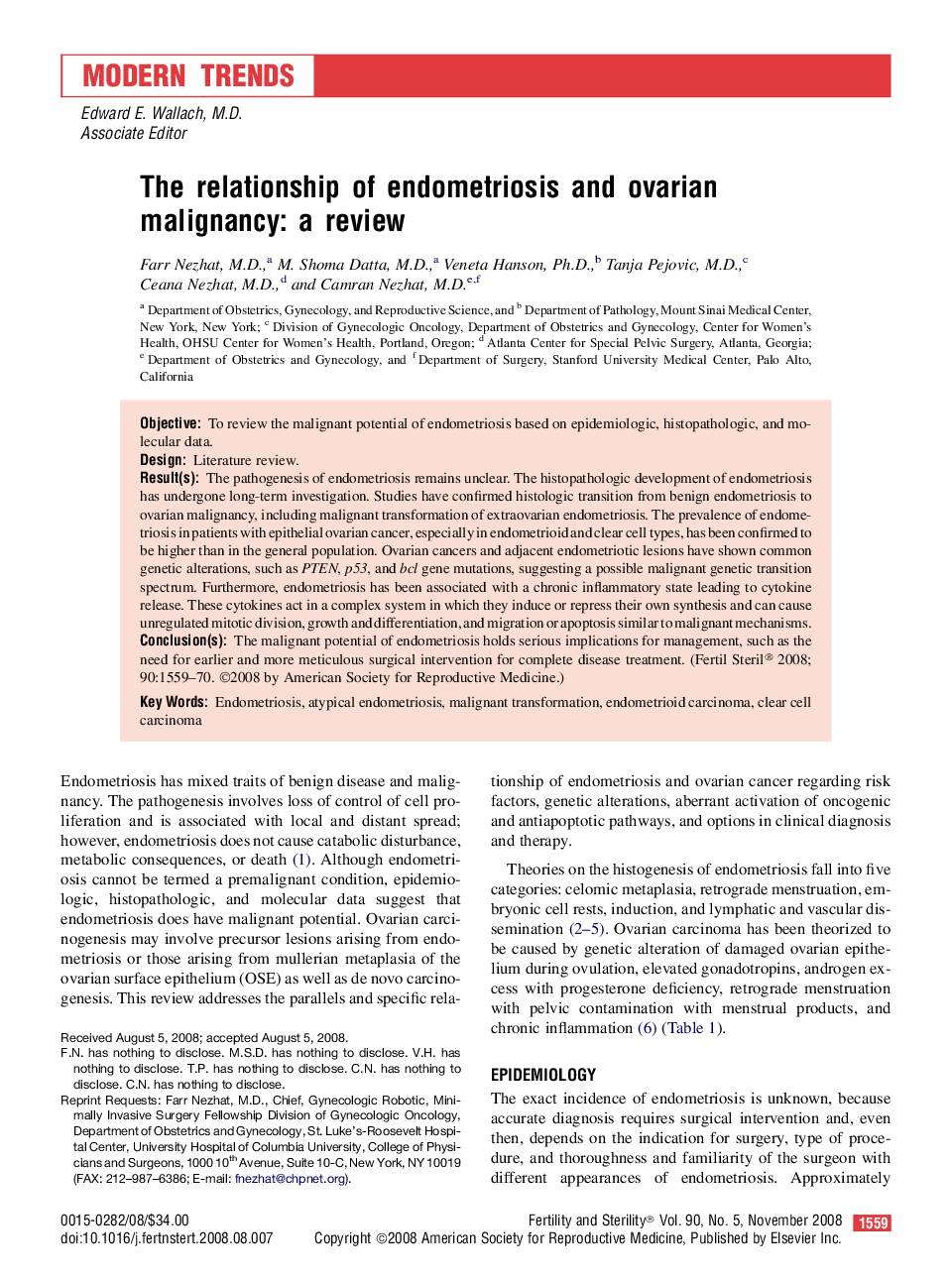| Article ID | Journal | Published Year | Pages | File Type |
|---|---|---|---|---|
| 3941588 | Fertility and Sterility | 2008 | 12 Pages |
ObjectiveTo review the malignant potential of endometriosis based on epidemiologic, histopathologic, and molecular data.DesignLiterature review.Result(s)The pathogenesis of endometriosis remains unclear. The histopathologic development of endometriosis has undergone long-term investigation. Studies have confirmed histologic transition from benign endometriosis to ovarian malignancy, including malignant transformation of extraovarian endometriosis. The prevalence of endometriosis in patients with epithelial ovarian cancer, especially in endometrioid and clear cell types, has been confirmed to be higher than in the general population. Ovarian cancers and adjacent endometriotic lesions have shown common genetic alterations, such as PTEN, p53, and bcl gene mutations, suggesting a possible malignant genetic transition spectrum. Furthermore, endometriosis has been associated with a chronic inflammatory state leading to cytokine release. These cytokines act in a complex system in which they induce or repress their own synthesis and can cause unregulated mitotic division, growth and differentiation, and migration or apoptosis similar to malignant mechanisms.Conclusion(s)The malignant potential of endometriosis holds serious implications for management, such as the need for earlier and more meticulous surgical intervention for complete disease treatment.
